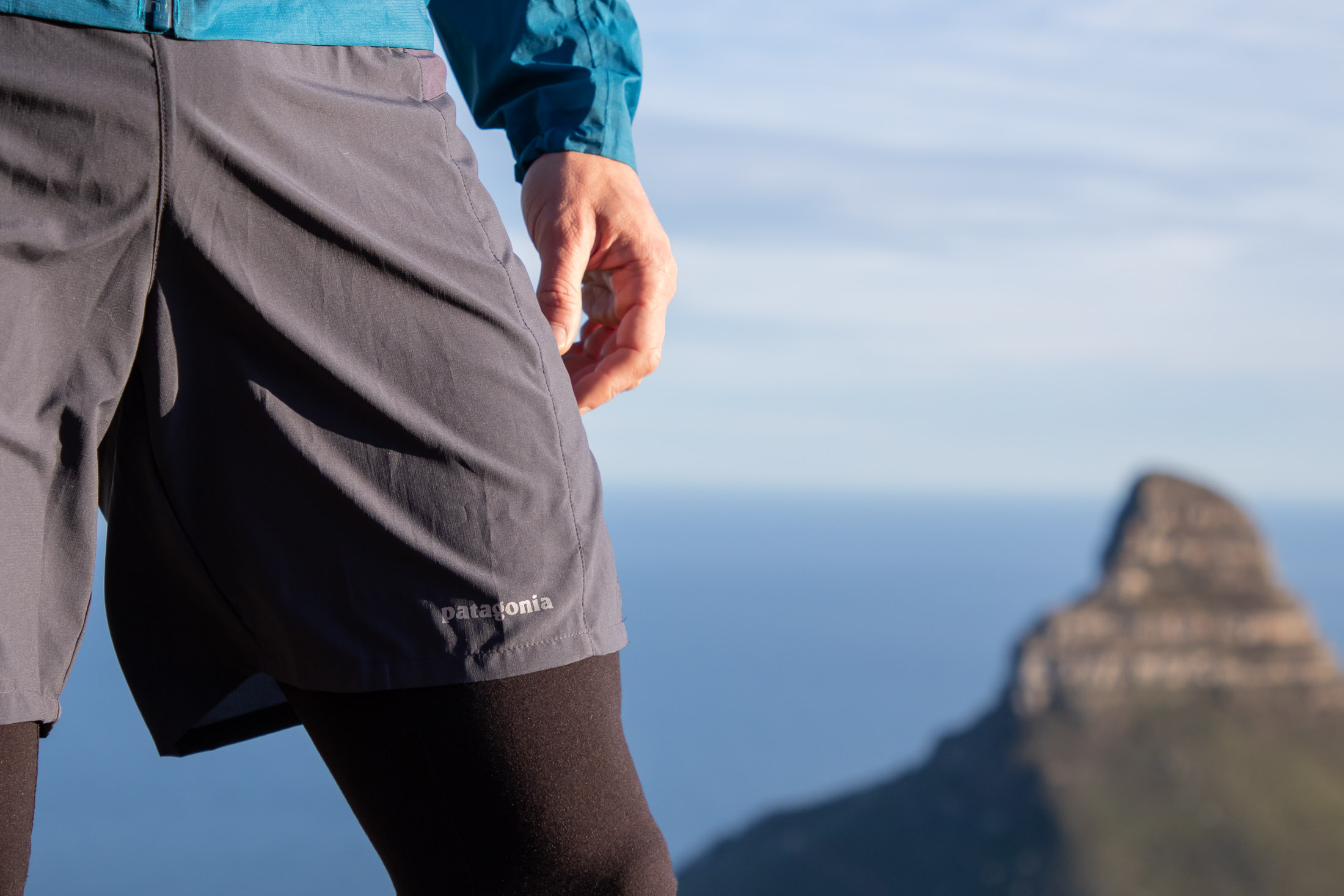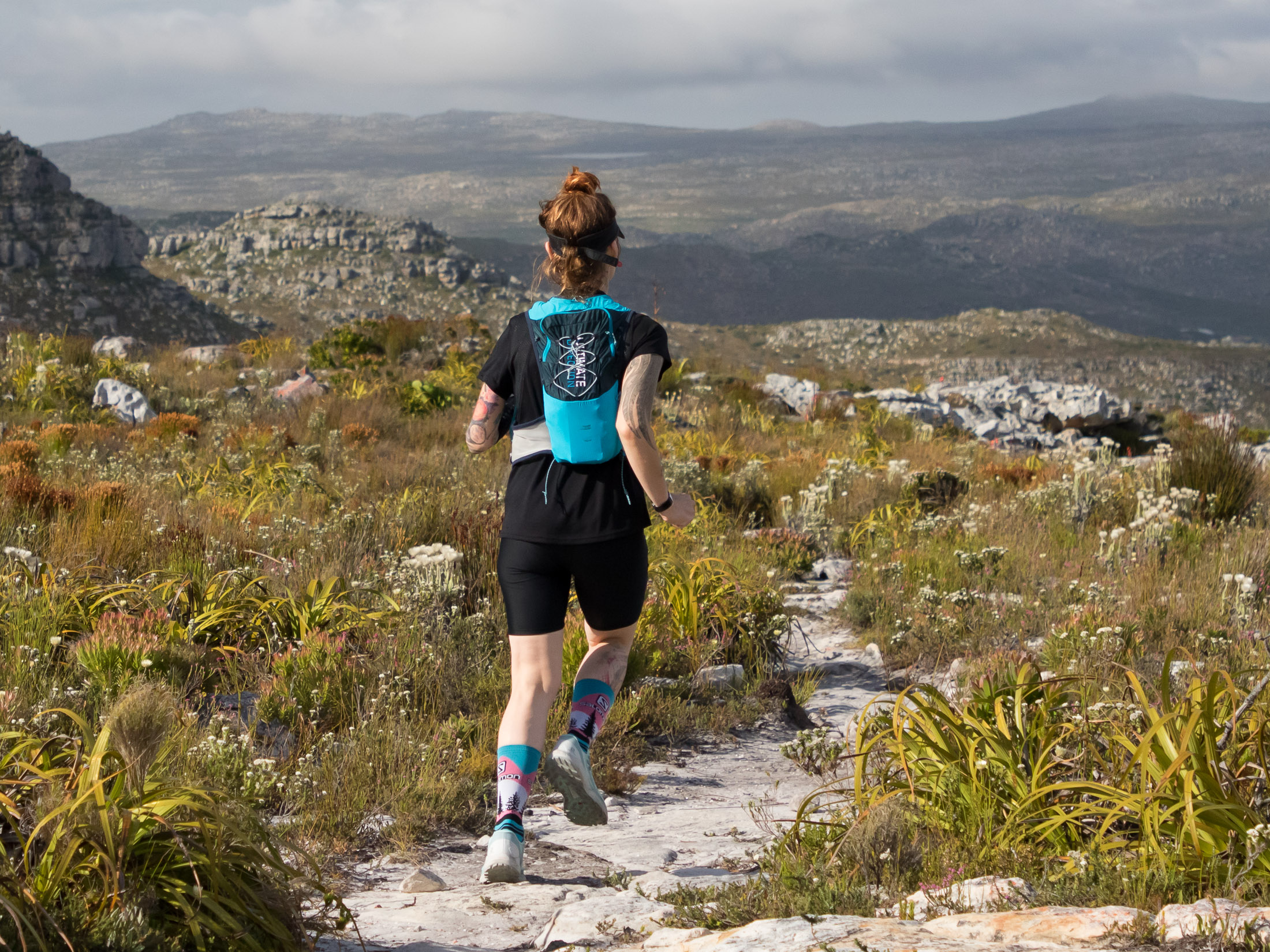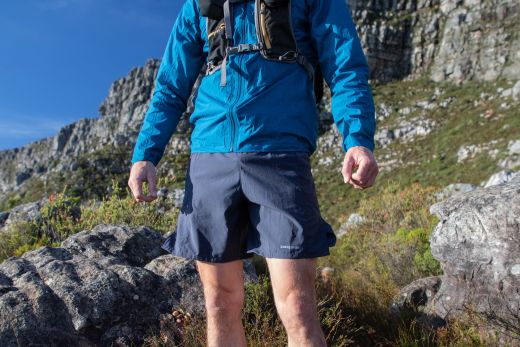If you’re new to running, you might be wondering what to wear when you head out to the trail or track. With a myriad of options, the answer really isn’t that obvious. You could go with tights, shorts, or a combination of the two. And then do you wear them with or without underwear? In this article I explain these options and answer some of the more common questions about what kind of pants to wear while running.
Shorts
Given their better ventilation, running shorts are the warm weather go-to for most runners. This is what you need to know when choosing a pair.
With or without underwear?
Most running shorts have liners built into them. These crepe boxers allow for better ventilation and moisture management, which reduces the chances of chafing and general discomfort. Wearing underwear with these would obviously defeat the point of the liner and is not recommended (a built-in liner will be supportive enough even for guys). Some running shorts actually don’t have liners, and that then begs the questions, why? Some people prefer to wear compression pants or tights under their shorts (more about that a little later). In this case, a pair of shorts without liner is more comfortable.
V-notch vs split leg shorts
Runnings shorts are made in two styles: with V-notch seams and split seams. In V-notch pants, the bottom of the leg seam ends in and upside down V-notch. In split leg pants, the seam only joins at a very short section (often just the waist band) and overlapping front and back panels are used to cover leg that would otherwise be visible. Split leg shorts are more performance orientated while V-notch pants are more popular, especially among trail runners, who tend to run in shorter strides and so did need the range of motion afforded by split leg shorts.
Length
Shorts are sold in a variety of lengths noted by the inseam measurement. Split leg pants can be as short as 1” while the longest V-notch shorts will be somewhere around 7”. Anything longer than that, and you’re entering casual shorts territory. Shorter shorts will generally provide greater ventilation and range of movement while a longer pair might be better at preventing chafing if your thighs rub together. But in the end it will all come down to personal preference and maybe your sense of modesty.
Material
Most running shorts are made of polyester, a polyester-spandex blend or a nylon blend. Polyester-spandex blends provide stretch as well as good moisture management while fabrics with a high percentage of nylon will wick sweat fastest. Synthetic fibres with an open weave and larger fibres will also breathe better and dry faster. Avoid natural fibres like cotton, which dries slowly and is likely to cause chafing. You might want to also look for fabrics with anti-microbial properties, especially if your running partners have sensitive noses.
Shorts over tights
Outside athletics, running tights for men is a relatively new thing, and many guys aren’t entirely comfortable with the idea of wearing tights and nothing else. So it has become the norm for men to wear shorts over tights. If you do decide to layer your running clothes in this way, you’ll probably want tights that don’t have a liner in them as this will allow for maximum ventilation and freedom of movement.

Running tights
For running in cold weather, there’s no beating a pair of properly fitted running tights. But these firm favourites come in a variety of lengths, and many women will run in shorter tights in summer too.
Tights vs leggings
Leggings are designed to be soft and stretchy to provide everyday comfort. Tights, on the other hand, are designed to be, well, tight. The idea here is that a tight fit prevents oscillation of the muscle during impact and increasing blood flow to the area. Even if the advantages aren’t obvious (There is still much debate on the effectiveness of compression clothing), tights are more athletic focussed and more likely to have the features you want in a pair of running pants. Leggings don’t offer any obvious benefit for runners, and most serious runners prefer tights.
Compression
In recent years there has been much hype about the benefits of compression clothing – that tights and socks with strategically placed compression panels can assist in blood circulation and improve athletic performance. Fortunately there is now enough research to make sense of these claims, and the consensus is that compression clothing can help reduce post-exercise soreness and activity time. But any affect on athletic performance is minimal. One study suggested that athletes wearing compression tights were 1.2% faster than a control group.
Fit
Fit is especially important when choosing tights. Running tights should be tight – almost like a second skin – without being restrictive. Of course that means finding a pair that suits your body shape and size. Luckily, with so many many brands out there, there’s going to be a pair of tights out there that fits your body tight. Do not buy tights online if you’ve bought that pair before (unless you’re ordering a few sizes with the intention of returning those that don’t fit. It’s always better to try on a new pair of tights in store first.
Length
Besides the full-length variety that runners wear in colder temperatures, tights also come in shorter lengths: 7/8-length, capris, 1/2-length and shorts. Choose a length and thickness suitable for the temperatures you will run in – full-length tights can be too much in summer. Also know that if you wear long socks, ⅞ tights or capris will be prevent overlapping (might just not work). Lastly, consider how much higher than your waist a pair of tights will reach. Those that are longer above the waist are often more comfortable to run in since they’re less likely to slide down.
Material
Tights need to be breathable, moisture-wicking, and stretchy. Most manufacturers achieve this with a blend of polyester, nylon, and spandex (also known as Lycra and elastane), but tights designed for colder temperature might also include merino wool for greater warmth. Steer clear of tights that have cotton in them. Cotton holds water and will bring on a chill as soon as you work up a sweat. Other material you might find includes polypropylene (an unwoven synthetic that has properties similar to polyester) and bamboo, which is warmer than synthetics by doesn’t wick moisture quite as well.
Seams
Running tights are designed with low-profile seams to avoid causing chafe in tender areas. If you choose a pair of tights that aren’t designed specifically for running (some are designed for weight lifting, yoga or casual wear), you’ll need to check that the seams aren’t going to cause uncomfortable rubbing. And because chafe is only likely to occur when you run in them, you’ll actually have to run around in the shop to get a feel for how they’ll perform.
Opaque
Running tights can be more or less opaque (some are slightly transparent), and unless you’re given to exhibitionism, you probably don’t want people to see your skin through your tights when you run. To avoid revealing more than you intend to, always check that a pair of tight are 100% opaque. To do this, you’ll need to try them on and inspect them in good light. A mirror will help. Running-specific tights are usually designed with your dignity in mind and are a hundred percent opaque.
With or without underwear?
Many women wear athletic underwear under their tights, but it’s a matter of personal preference. Some women find that going commando is more comfortable especially in the summer when you don’t want to add another layer. Some might worry about sanitariness, but a pair of undies aren’t going to get any less sweaty than a pair of tights if that’s your next-to-skin layer. If you prefer to wear underwear, choose synthetic or merino wool (if it’s cold) with low profile seams.

Most guys will wear tights under a pair of shorts and are unlikely to also wear a pair of underwear under them (That’s just too many layers). Those who don’t wear shorts over their tights will sometimes wear a form-fitting jockstrap under them for extra support. And some men’s running tights are designed with a reinforced crotch for additional support – your best bet if you want to go commando.
Optional extras in both shorts and tights
Besides the features most important in a good pair of running shorts and tights, there are few optional features worth looking for.
Pockets
Many running shorts and tights have pockets or pouches for storing items like car keys, snacks or a cell phone. Probably the most useful is a small zippered key pocket sewn into the waistband, but you might also want a pocket big enough for a credit card, energy bar, or gel pack. These are particularly useful on runs where you’re not going to wear a vest or pack. If you need larger pockets (increasingly popular on shorts designed for trail running), know that pockets sewn closer to the waistband will bounce less.
High visibility
Both shorts and tights can do with some reflective strips, especially if you run after dark. These are especially important on dark coloured shorts and tights, which would otherwise be almost invisible in the dark. If reflective strips aren’t a feature on your preferred pants, the next best thing is brightly coloured fabric.
Get more advice from this gearhead
You now know everything you need to know about pants for running. But don’t stop here. On this website you’ll find many more in-depth gear guides on everything from headlamps to trekking poles as well as many more how-to articles. See the links below for favourites or, even better, sign up for my newsletter to get all the latest from trail and crag delivered straight to your inbox.
